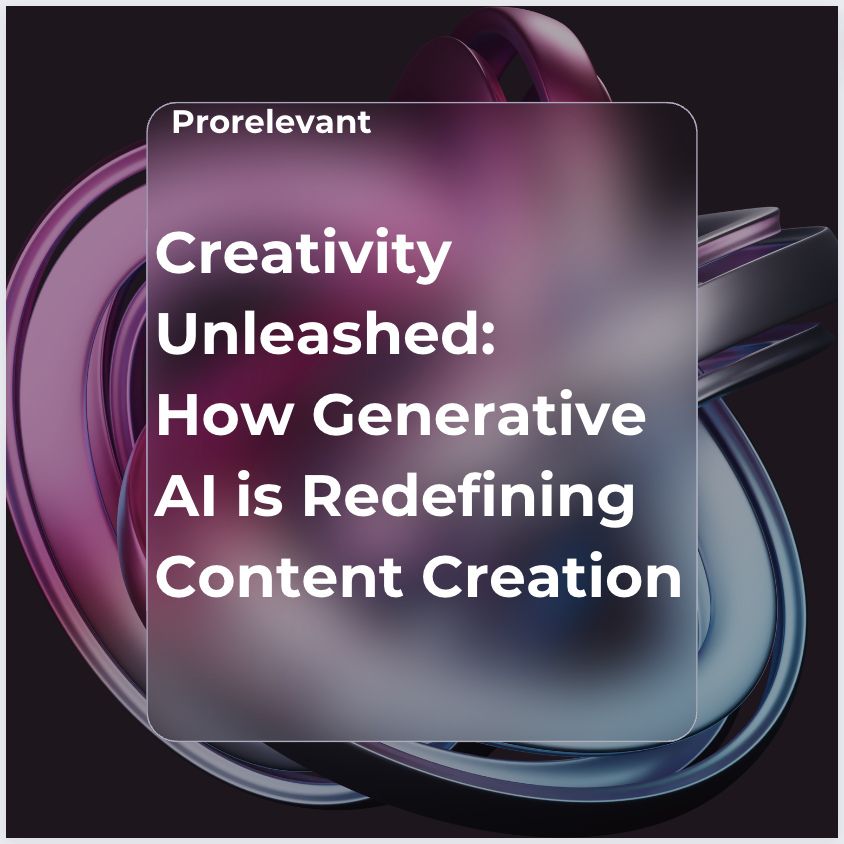
27 Oct Creativity Unleashed: How Generative AI is Redefining Content Creation.
A transformation is underway in content creation, and its driving force is generative AI. This technology has unleashed unprecedented creativity across various industries, from art and design to marketing and storytelling. Generative AI, such as OpenAI’s GPT-3, has the potential to redefine how content is produced, inspiring a new era of innovation and efficiency.
- Redefining Writing and Copywriting
Generative AI is radically transforming the way we write and create content. Traditional writing tasks, such as product descriptions and even legal documents, can now be automated with the help of AI-powered text generators. These tools not only save time but also provide consistent, high-quality content. For instance, e-commerce platforms like Shopify employ AI-generated product descriptions that adapt to different products and customer segments. This approach allows businesses to scale their content creation efforts without compromising quality.
Furthermore, generative AI can assist in creative writing and storytelling. It can provide authors and screenwriters with new perspectives and ideas, a valuable tool for overcoming writer’s block. AI models like GPT-3 can suggest plot twists, character developments, or even entire scenes by analyzing vast datasets of books, articles, and scripts. Integrating AI into the creative process helps authors discover uncharted territories in their narratives and expand the boundaries of their storytelling.
- Visual Art and Design
Generative AI is not limited to text; it’s also making waves in visual art and design. One prominent example is the use of neural networks in creating art. Artists and designers leverage AI models like DeepDream to generate stunning and unique visuals. DeepDream, inspired by the architecture of a neural network, can transform ordinary photos into intricate, dreamlike compositions. This technology opens up a whole new dimension of creativity, allowing artists to explore unique visual styles that may not have been conceivable without AI.
Moreover, generative AI is redefining the design process itself. Designers can use AI-powered tools to generate logos, branding materials, and website layouts. For instance, platforms like Canva employ AI algorithms to suggest design elements, color palettes, and fonts based on user preferences. This empowers individuals and businesses to create visually appealing content without design experience.
- Music Composition and Soundscapes
AI is not only a game-changer in the world of text and visuals but also in music and sound. Generative AI is now capable of composing music and generating intricate soundscapes. AI composers can analyze the works of classical musicians or modern artists and create original compositions inspired by these styles. For instance, OpenAI’s MuseNet can generate music in various genres, including classical, jazz, and pop, providing musicians and content creators with a vast library of royalty-free compositions.
Furthermore, AI is revolutionizing the sound design industry. Sound designers can utilize generative AI to create immersive soundscapes for video games, movies, and virtual reality experiences. AI models can generate ambient noises, sound effects, and even voiceovers, ensuring that the audio in these mediums is dynamic and engaging. This saves time and enhances the overall quality of the content.
- Marketing and Personalization
In the marketing world, generative AI is enhancing personalization and customer engagement. Marketers use AI-driven algorithms to craft personalized email campaigns, advertisements, and product recommendations. For example, e-commerce giants like Amazon and Netflix leverage AI to analyze user behavior and generate tailored product recommendations. This level of personalization not only improves customer satisfaction but also drives sales and brand loyalty.
Additionally, generative AI facilitates the creation of hyper-targeted content for social media and advertising. AI can analyze user data and generate ad copy, headlines, and images optimized for specific audience segments. This means that advertisers can produce content that resonates with individual users, increasing the likelihood of conversion.
In conclusion, generative AI is reshaping content creation across diverse industries. It is revolutionizing writing, visual art, music composition, and marketing, enabling greater efficiency and fostering new realms of creativity. As AI advances, the possibilities for content creation are boundless, and we can expect a future where humans and machines collaborate to produce more creative, personalized, and engaging content than ever.
Want to know more?
Want to know more? Visit prorelevant.com to find out how you can customize your marketing efforts.
Check out my previous articles about Demystifing Analytic AI and The Intersection between Generative and Analytic AI.
References
Anisin, Anna. “Council Post: Generative AI for Content Creation: How Marketers Can Use It.” Forbes, Forbes Magazine, 5 Oct. 2023, www.forbes.com/sites/theyec/2023/08/17/generative-ai-for-content-creation-how-marketers-can-use-it/?sh=43477391619e.
“Introducing AI-Generated Product Descriptions Powered by Shopify Magic.” Shopify, 20 Apr. 2023, www.shopify.com/blog/ai-product-descriptions.
Kalra, Khwab. “Deepdream.” Medium, Medium, 20 July 2023, medium.com/@khwabkalra1/deepdream-51f42802a4db#:~:text=%2D%20Artistic%20Creativity%3A%20DeepDream%20allows%20AI,by%20visualizing%20their%20learned%20features.




No Comments